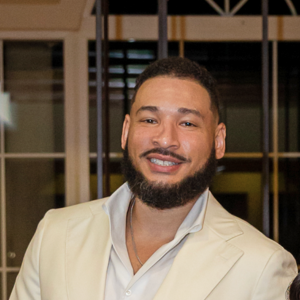
Image Source: pexels.com
Leaving a legacy is about more than just passing down money—it’s about ensuring your loved ones are cared for and your values live on. But taxes can take a big bite out of what you leave behind if you don’t plan ahead. Knowing how to protect your legacy from taxes is crucial, whether you’re building wealth or already have a sizable estate. The good news? With the right strategies, you can minimize the tax burden and maximize what your heirs receive. Let’s explore twelve actionable ways to keep more of your legacy in your family’s hands.
1. Create a Comprehensive Estate Plan
A solid estate plan is the foundation for anyone who wants to protect their legacy from taxes. This plan should include a will, power of attorney, and healthcare directives, but it’s also wise to consult with an estate planning attorney. They can help you structure your assets in a way that reduces estate taxes and ensures your wishes are honored. Without a plan, your estate could be subject to unnecessary taxes and legal fees.
2. Take Advantage of the Annual Gift Tax Exclusion
One of the simplest ways to protect your legacy from taxes is by gifting assets during your lifetime. The IRS allows you to give up to $18,000 per recipient per year (as of 2024) without incurring gift taxes. By spreading out gifts over several years, you can transfer significant wealth tax-free and reduce the size of your taxable estate.
3. Set Up Irrevocable Trusts
Irrevocable trusts are powerful tools to protect your legacy from taxes. Once assets are placed in an irrevocable trust, they’re no longer considered part of your estate, which can significantly reduce estate taxes. These trusts can also provide asset protection from creditors and ensure your wealth is distributed according to your wishes.
4. Use Life Insurance Strategically
Life insurance can be more than just a safety net—it’s a smart way to protect your legacy from taxes. Proceeds from life insurance policies are generally income tax-free for beneficiaries. By setting up an irrevocable life insurance trust (ILIT), you can also keep the policy’s value out of your taxable estate, further reducing potential estate taxes.
5. Make Charitable Donations
Charitable giving is a win-win: you support causes you care about and protect your legacy from taxes. Donations to qualified charities can reduce your taxable estate and may provide income tax deductions during your lifetime. Consider setting up a charitable remainder trust or donor-advised fund for even greater tax benefits.
6. Take Advantage of the Lifetime Estate and Gift Tax Exemption
The federal government allows you to transfer a certain amount of wealth tax-free over your lifetime. For 2024, the exemption is $13.61 million per individual. By using this exemption wisely, you can protect your legacy from taxes and pass on more to your heirs. Tracking your gifts and consulting with a tax professional to maximize this benefit is important.
7. Consider Family Limited Partnerships
Family limited partnerships (FLPs) are a sophisticated way to protect your legacy from taxes. By transferring assets into an FLP, you can retain control while gradually gifting partnership interests to family members. This strategy can reduce the taxable value of your estate and provide asset protection.
8. Title Assets Properly
How you title your assets can have a big impact on your estate’s tax liability. Joint ownership, transfer-on-death accounts, and beneficiary designations can help assets pass directly to heirs, often avoiding probate and reducing estate taxes. Review your account titles regularly to ensure they align with your legacy goals.
9. Use Step-Up in Basis to Minimize Capital Gains
When heirs inherit assets, they often receive a “step-up” in cost basis, which can significantly reduce capital gains taxes if they sell those assets. Understanding how this rule works can help you protect your legacy from taxes and ensure your heirs keep more of what you’ve built.
10. Pay for Education or Medical Expenses Directly
Paying tuition or medical bills directly to the provider for your loved ones is another way to protect your legacy from taxes. These payments are not subject to gift tax limits, allowing you to support family members while reducing your taxable estate.
11. Review and Update Your Plan Regularly
Tax laws change, and so do your personal circumstances. To truly protect your legacy from taxes, review your estate plan every few years or after major life events. Regular updates ensure your strategies remain effective and your wishes are always reflected.
12. Work With a Qualified Financial Advisor
Navigating the complexities of estate and tax planning can be overwhelming. A qualified financial advisor can help you identify the best strategies to protect your legacy from taxes, tailor a plan to your unique situation, and keep you informed about changes in tax law.
Building a Lasting Legacy Starts With Smart Tax Planning
Protecting your legacy from taxes isn’t just about numbers—it’s about ensuring your life’s work benefits those you care about most. By taking proactive steps now, you can minimize taxes, avoid legal headaches, and give your family the gift of financial security. Remember, the right plan today can make all the difference for generations to come.
How are you planning to protect your legacy from taxes? Share your thoughts or questions in the comments below!
Read More
Find the Right Amount of Life Insurance in 10 Minutes
What’s the Right Type of Life Insurance?

Travis Campbell is a digital marketer/developer with over 10 years of experience and a writer for over 6 years. He holds a degree in E-commerce and likes to share life advice he’s learned over the years. Travis loves spending time on the golf course or at the gym when he’s not working.











